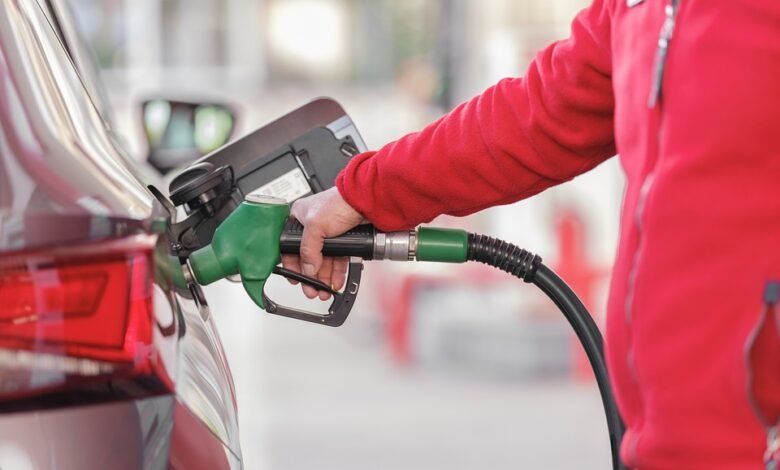The Ultimate Guide to Replacing the Gas Filler Hose for a Chevy Fleetline Car 52900
The Ultimate Guide to Replacing the Gas Filler Hose for a Chevy Fleetline Car 52900

Introduction
When it comes to maintaining a classic car like the Chevy Fleetline, ensuring each part is in top condition is crucial for a smooth ride and lasting performance. One of the often-overlooked components is the gas filler hose, a small but mighty piece that connects the gas tank to the filler neck. For a Chevy Fleetline car 52900, replacing the gas filler hose is essential to prevent leaks, maintain fuel efficiency, and avoid the dreaded gas smell that can linger in your vehicle.
If you own one of these iconic Fleetlines or are in the process of restoring one, you’ve likely run into issues with this part, especially since older hoses can dry out, crack, or become brittle over time. So, what does it take to replace the gas filler hose for a Chevy Fleetline car 52900? Let’s dive in and explore!
What Exactly Is the Gas Filler Hose for a Chevy Fleetline Car 52900?
Before we roll up our sleeves, let’s break down what this part does. The gas filler hose is a flexible rubber tube that connects your gas tank to the filler neck, where you insert the fuel nozzle at the gas station. Its job is simple: it ensures fuel flows seamlessly from the pump into your tank without any leaks.
But in an older car like the Chevy Fleetline, especially the 52900 model, the hose can start to wear out due to age, weather exposure, and regular use. Over time, cracks and leaks may develop, leading to fuel loss or worse—unwanted vapors in the cabin.
Why Should You Replace It?
There are a few reasons to keep an eye on this part:
- Fuel Efficiency: A damaged hose can lead to leaks, wasting precious fuel and costing you money.
- Safety: Fuel leaks are a hazard. A cracked hose can release gasoline fumes, which are highly flammable and dangerous to inhale.
- Preserve Your Classic Car: Nobody wants their vintage ride to smell like gasoline or, even worse, have corroding parts under the hood. Replacing the hose ensures your Fleetline stays in tip-top shape.
Signs Your Gas Filler Hose Needs Replacing
Wondering if it’s time to swap out that old hose? Look out for these telltale signs:
- Gasoline Odor: If your car reeks of fuel, especially near the rear, that’s a strong indication your gas filler hose might be cracked or loose.
- Fuel Leaks: Notice a puddle under your car after filling up? This could mean fuel is leaking from the hose.
- Cracks or Wear: If you visually inspect the hose and see cracks, it’s time for a replacement.
Step-by-Step Guide: How to Replace the Gas Filler Hose for a Chevy Fleetline Car 52900
So, you’ve determined it’s time to replace that gas filler hose. Here’s your foolproof guide to get the job done!
Tools You’ll Need
- Replacement gas filler hose for a Chevy Fleetline car 52900
- Screwdriver or socket wrench
- Pliers
- Razor blade or hose cutter
- Jack and jack stands (for raising the car if needed)
- Rags and a fuel-safe container (just in case of spills)
Step 1: Safety First
Before you start any car work, always prioritize safety. Make sure your car is on a flat surface and in “Park” with the parking brake engaged. If you need extra space underneath, use a jack to raise the car and secure it with jack stands.
Step 2: Relieve Fuel Pressure
If there’s gas in the tank, relieve the pressure by loosening the gas cap. This helps prevent unwanted fuel spray when disconnecting the hose.
Step 3: Remove the Old Hose
Locate the gas filler hose by following the filler neck down to the gas tank. Using a screwdriver or socket wrench, loosen the hose clamps that secure the hose to the filler neck and the tank. Once the clamps are off, you can use pliers to gently twist and pull the hose free. If the hose is particularly stuck, carefully cut through it with a razor blade.
Step 4: Clean the Connections
Before installing the new hose, take a rag and wipe down the tank and filler neck connections. This will ensure a tight, clean seal.
Step 5: Install the New Gas Filler Hose for a Chevy Fleetline Car 52900
Slide the new hose onto the gas tank first, then onto the filler neck. Use your screwdriver or socket wrench to tighten the hose clamps securely. Make sure everything is snug but not overly tight—just enough to create a solid seal without crushing the hose.
Step 6: Test for Leaks
With the new hose in place, tighten the gas cap and start the car. Keep an eye (and nose!) out for any signs of leaks or fuel odor. If everything seems good, congratulations—you’ve successfully replaced your gas filler hose!
FAQs About the Gas Filler Hose for a Chevy Fleetline Car 52900
1. How often should I replace the gas filler hose on my Chevy Fleetline?
Typically, you should inspect it every few years, especially if the car is older or you notice fuel-related issues. Replacing the hose every 5-10 years is a good rule of thumb, depending on the car’s condition and exposure to the elements.
2. Can I drive with a damaged gas filler hose?
While it’s possible, it’s not recommended. Driving with a cracked or leaking hose can lead to fuel loss, potential fire hazards, and a strong gasoline smell inside your vehicle.
3. How much does a replacement gas filler hose cost?
The cost of a gas filler hose for a Chevy Fleetline car 52900 varies depending on the supplier, but it generally ranges from $20 to $60. Keep in mind that labor costs for professional installation could add to this.
4. Are there alternatives to replacing the hose myself?
If DIY isn’t your thing, you can always take your car to a trusted mechanic. However, replacing a gas filler hose is a relatively simple task that most car enthusiasts can handle with a bit of patience and the right tools.
5. What if my car still smells like gas after replacing the hose?
If the smell persists after replacing the gas filler hose, there may be other issues at play, such as a loose gas cap, a damaged fuel tank, or faulty fuel lines. In this case, further inspection is needed.
Additional Tips for Classic Car Maintenance
Beyond the gas filler hose, owning a classic like the Chevy Fleetline requires careful maintenance. Here are a few additional tips to keep your vintage ride running like new:
- Regularly Inspect Seals and Gaskets: Over time, seals and gaskets can wear out. These components keep everything airtight and help prevent leaks.
- Use High-Quality Fluids: Classic cars benefit from premium oil and gasoline, which reduce the risk of corrosion and maintain engine health.
- Store Your Car Properly: If you’re not driving your Fleetline regularly, make sure it’s stored in a cool, dry place to avoid moisture buildup, which can lead to rust.
Conclusion
Replacing the gas filler hose for a Chevy Fleetline car 52900 may seem like a daunting task, but with the right tools and a step-by-step approach, it’s a job most DIY enthusiasts can tackle in an afternoon. Whether you’re restoring a classic or just trying to keep your car in prime condition, maintaining key components like the gas filler hose will keep your Chevy Fleetline running smoothly for years to come.
So next time you smell gas or see a leak, don’t panic—just follow this guide, and you’ll be back on the road in no time! Happy driving!



